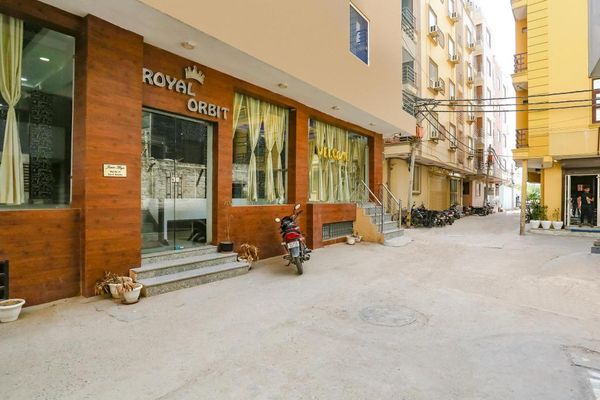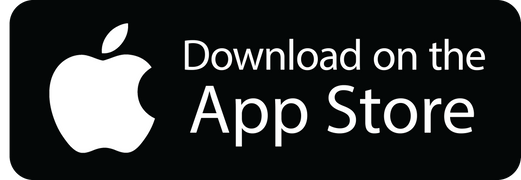5 Industries that are Using Promotional Products for Marketing & Why
 Jake Dale
09 Jan, 2025
11 mins read
597
Jake Dale
09 Jan, 2025
11 mins read
597

The promotional products industry has grown by leaps and bounds; according to the Promotional Products Association International (PPAI), the industry now generates more than $23 billion in annual sales. Modern businesses and other organizations have found that the effective use of promotional products can bring significant benefits to marketing, sales and customer retention.
What is a custom promotional product?
A promotional product is a branded item that a company customizes and offers to its customers and other stakeholders. It's hard to imagine modern business without them, whether it's clothing, office supplies or kitchen appliances. Over time, these products can leave a lasting impression and draw potential customers to a company's brand and products.
Examples of this can be found throughout modern society. At sporting and entertainment events, T-shirt cannons shoot marketing products into the audience. Newly hired employees may receive "swag bags" with branded items such as notebooks, water bottles and caps. Expo sponsors can provide attendees with drawstring bags or USB chargers. They can also provide T-shirts with the university's logo and stationery for campus tours.
There are numerous examples of companies using promotional and marketing products in this way. Companies can also determine how they use promotional products as part of their growth strategy.
What is a custom promotional apparel
Promotional items are used to promote brands, social causes and events and are known as branded items or giveaways.
Promotional products have become a common marketing tool worldwide. I am sure you have some branded products in your house.
How do companies procure custom promotional apparel?
The promotional products industry consists of thousands of suppliers and distributors for businesses of all sizes. There are two main distinct players in the promotional products industry:
Suppliers: Companies that manufacture and customize promotional products according to the needs of their customers and the requirements of their distributors.
Distributors: companies that promote and sell promotional products and communicate the needs and requirements of customers to distributors.
Companies that want to buy promotional products usually first sign a contract with a distributor. The company decides on the type of product and the degree of customization and places an order with the distributor. After the supplier manufactures the product, the distributor delivers the finished product to the customer. The customer can then provide promotional items to increase brand awareness and boost sales.
What are the different types of custom promotional products?
Promotional items come in a wide variety of forms. Depending on the needs of your business, industry and clientele, some promotional items are more useful than others. However, there are some promotional items that outperform others in terms of popularity and overall impact.
Promotional items are often rated based on impressions during the item's useful life. In other words, impressions are an attempt to measure the number of times someone has seen or touched a promotional product or its brand. The shelf life of a promotional item is often associated with the usefulness or longevity of the product, which ends when the product wears out or is discarded.
According to PPAI, the following promotional items are the most popular and effective, based on estimated lifetime impressions:
- Outerwear - Items such as jackets, rain jackets and windbreakers can generate an estimated 6,100 lifetime impressions.
- T-shirts - items such as T-shirts can achieve 3,400 lifetime impressions.
- Headwear - Marketing products such as caps and visors can achieve 3,400 lifetime impressions.
- Bags - Marketing products such as backpacks, tote bags and drawstring bags can achieve 3,300 lifetime impressions.
- Writing Instruments - Promotional products such as pens, notebooks and pencils can achieve 3,000 lifetime impressions.
- Polo Shirts - Promotional items such as polo shirts can achieve an estimated 2,300 lifetime impressions.
- Desk Accessories - Products such as trays, bookends and organizers can achieve an estimated 1,450 lifetime impressions.
- Drinkware - Promotional items such as coffee mugs, water bottles and glassware can generate an estimated 1,400 lifetime impressions.
- Umbrellas - Promotional items such as umbrellas can achieve 1,100 lifetime impressions.
- Powerbank - A powerbank used to charge electronic devices can achieve an estimated 900 lifetime impressions.
- Calendars - Promotional items such as calendars can achieve around 850 lifetime impressions.
- USB sticks - Promotional items such as USB sticks can achieve around 700 lifetime impressions.
On the other hand, personal protective equipment (PPE) has become a popular new promotional products category: since the COVID-19 pandemic spread around the world, PPE-branded items such as face masks, hand sanitizers, handkerchiefs and face shields have become commonplace.
How will your organization use them?
The possibilities for using promotional products are endless and offer a wide range of options, not to mention personalization. Businesses, non-profits, academic institutions and public agencies can take advantage of promotional and marketing products for both external and internal use.
Externally, the use of promotional products has many advantages. Marketing products can be offered to existing and potential customers to encourage sales and referrals. Companies can distribute promotional items to mark the launch of a new product. Companies can promote branded products to motivate or change specific behaviors.
Internally, marketing products can be used to improve relationships with key stakeholders such as employees, investors and partners. By expressing their appreciation through promotional products, organizations can secure long-term contributions from these stakeholders.
Generally, organizations use promotional products for the following purposes:
- Increase brand awareness
- Corporate culture and identity
- Customer appreciation and retention
- Employee appreciation and retention
- Incentive and behavior change programs
- Product awareness and evaluation
- Public relations and investor relations
- Sales and referrals
Are custom promotional items an effective marketing tool?
Promotional items are a very effective marketing tool. However, organizations that want to use promotional items should carefully consider what purpose they are using them for. If promotional items are beneficial to the user and also convey the organization's brand and message in the right way, the organization can achieve many of its goals.
To illustrate the effectiveness of promotional products as a marketing tool, consider the following statistics from PPAI.
- Nearly 100% of consumers are willing to trade to receive a promotional product.
- About 96% of consumers want to be informed in advance when companies distribute promotional items.
- About 80% of consumers respond immediately to promotional or marketing products, even if they are unfamiliar with the brand.
- Around 72 % of consumers associate a company's reputation with the quality of its promotional products.
- Around 70% of brands consider promotional products to be a very effective means of achieving their marketing objectives.
Top 5 Industries
Promotional products are also considered the most effective form of advertising and marketing to stimulate action across multiple generations of consumers. From the Silent Generation to Baby Boomers and Generation X to Millennials, promotional products have been most valued as a means of driving consumer behavior. Across these very different generations, promotional products outperformed other marketing and advertising methods, including online, broadcast, print and mobile. Overall, promotional products are a very popular and effective marketing tool.
They allow companies to spread their cultural and promotional messages in a way that is memorable to customers, potential customers and even employees. It is this stickiness that sets promotional products apart from other marketing and advertising methods.
Promotional items have been used as a marketing tool in the United States since the country's founding. The earliest documented use was during the election of George Washington, when commemorative buttons were distributed to the public in honor of the new nation's first president. The inventor of the promotional item, however, was Jasper Meeks, who, when his newspaper printing company ran into financial difficulties, printed advertising messages on gunny sacks to keep them afloat.
In 1904, 12 promotional products manufacturers banded together to form the Promotional Products Association International (PPAI), a trade association that still exists today. Today, the industry generates more than $20 billion in annual sales. Plum Marketing offers promotional products for a variety of industries. There are five industries where a sustained marketing campaign using promotional products can have the greatest impact. These industries are:
- Education
- Finance
- Construction
- Healthcare
- Nonprofit Organizations
Written By:
Jake Dale



Hotels at your convenience
Now choose your stay according to your preference. From finding a place for your dream destination or a mere weekend getaway to business accommodations or brief stay, we have got you covered. Explore hotels as per your mood.





